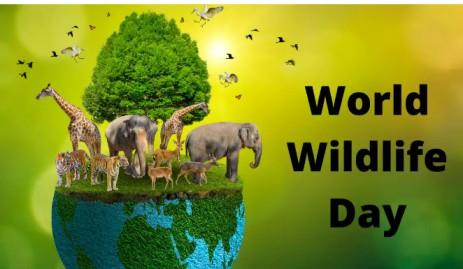World Wildlife Day is celebrated on March 3 every year to raise awareness about the importance of protecting the planet's wild animals and plants. This year's theme, "Forests and Livelihoods: Sustaining People and Planet," highlights the critical role forests play in supporting the livelihoods of millions of people around the world, as well as their importance in sustaining biodiversity.
According to the United Nations, more than one billion people around the world depend on forests for their livelihoods, including food, fuel, and medicine. However, deforestation, habitat loss, and other factors have put many forest species at risk of extinction, including tigers, elephants, and gorillas.
To mark World Wildlife Day, events and activities are being held around the world to raise awareness about the importance of protecting forests and the animals that live in them. In India, for example, the Ministry of Environment, Forest and Climate Change has organized a webinar on the theme of this year's World Wildlife Day, which will feature experts from various fields discussing the importance of forests for sustaining biodiversity and livelihoods.
Meanwhile, in Brazil, a country that is home to the Amazon rainforest, which is one of the most biodiverse regions on the planet, environmentalists are calling for greater efforts to protect the forest from deforestation and other threats. According to the World Wildlife Fund, the Amazon rainforest is home to more than 10% of the world's known species, including jaguars, sloths, and macaws.
In the United States, the Nature Conservancy is hosting a virtual event called "Conserving Our Forests and the Wildlife That Depend on Them," which will bring together experts from various organizations to discuss the challenges facing forests and the need for collaborative solutions.
In addition to raising awareness about the importance of forests, this year's World Wildlife Day is also an opportunity to celebrate the successes of conservation efforts around the world. For example, in Nepal, a country that is home to rare species such as the Bengal tiger and the greater one-horned rhinoceros, conservation efforts have led to an increase in the populations of these animals in recent years.
Similarly, in Africa, conservationists have been working to protect the continent's iconic wildlife, including elephants, lions, and rhinoceroses. Through measures such as anti-poaching patrols and community-based conservation programs, some populations of these species have been stabilizing or even increasing in recent years.
However, despite these successes, much work remains to be done to protect the world's wildlife and forests. According to the World Wildlife Fund, more than 10,000 species are at risk of extinction, and many forests around the world continue to be threatened by deforestation, climate change, and other factors.
To address these challenges, governments, conservation organizations, and individuals must work together to protect forests and the wildlife that depend on them. This may involve measures such as strengthening protected areas, promoting sustainable forestry practices, and engaging local communities in conservation efforts.
Ultimately, the fate of the world's wildlife and forests is in the hands of all of us. By taking action to protect these vital resources, we can help ensure a sustainable future for ourselves and for generations to come.
